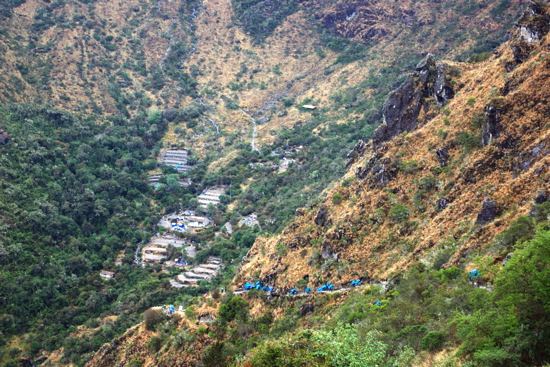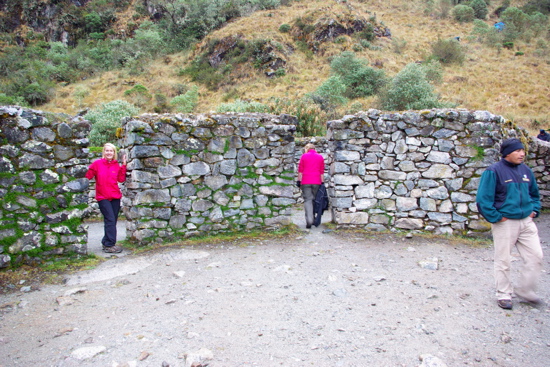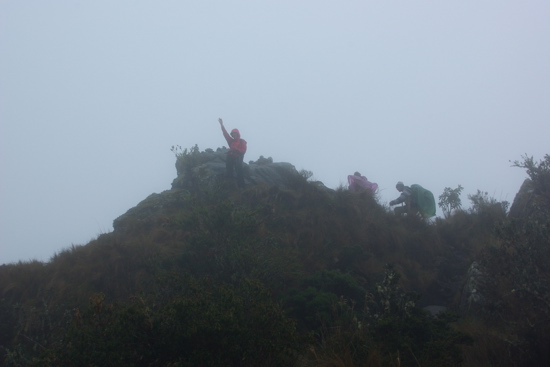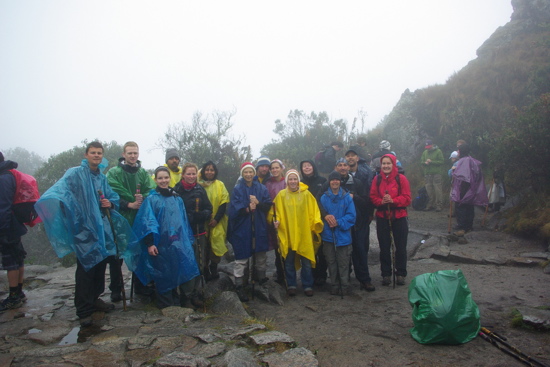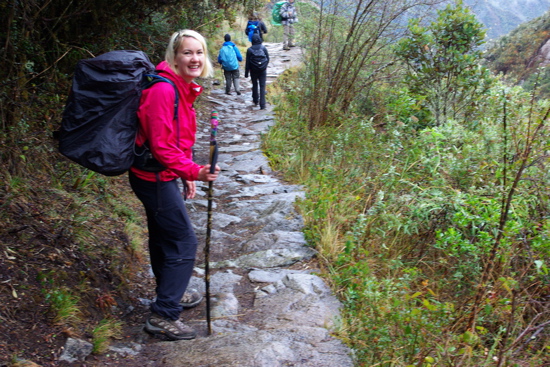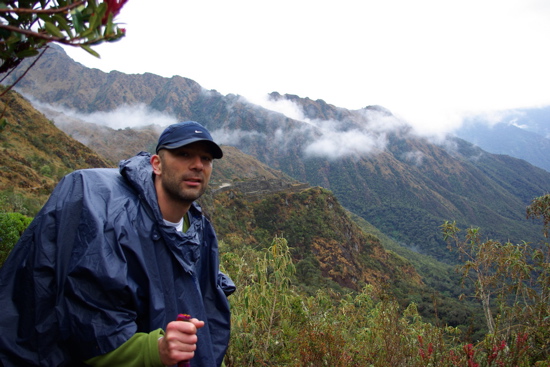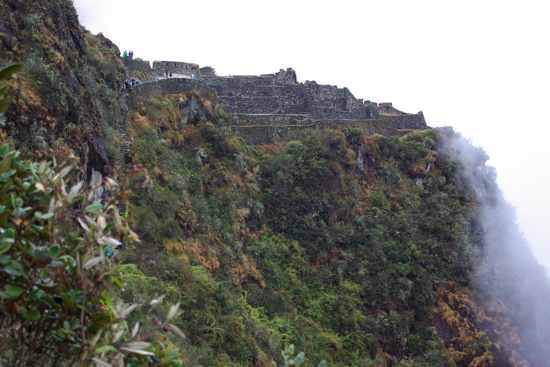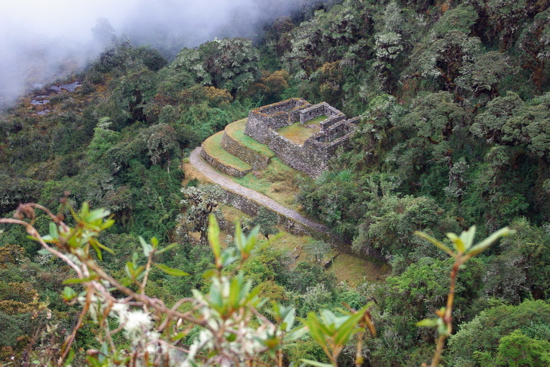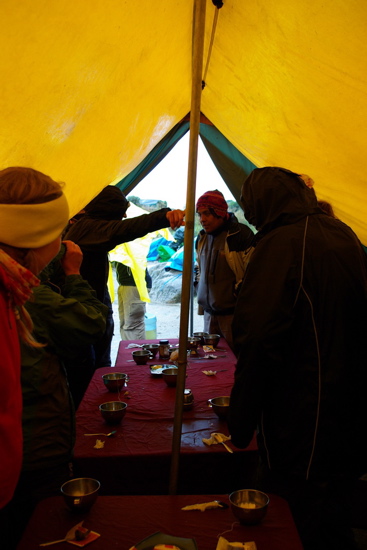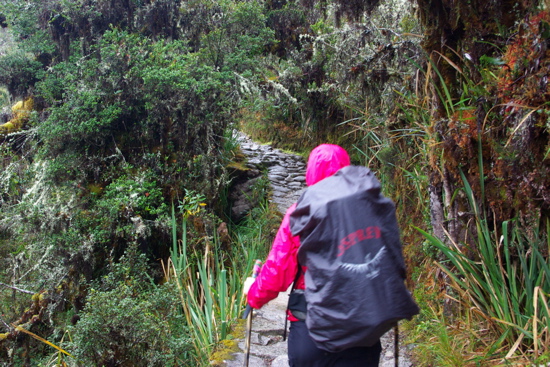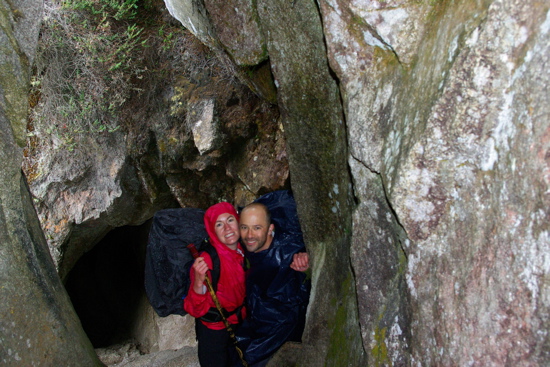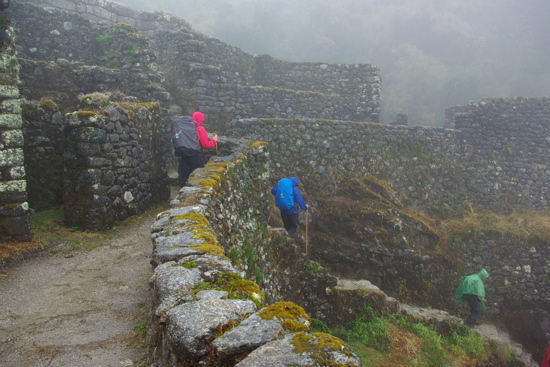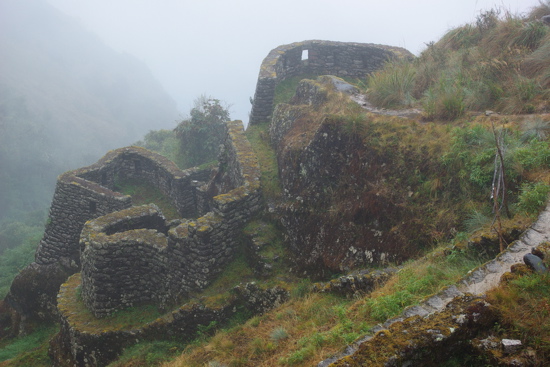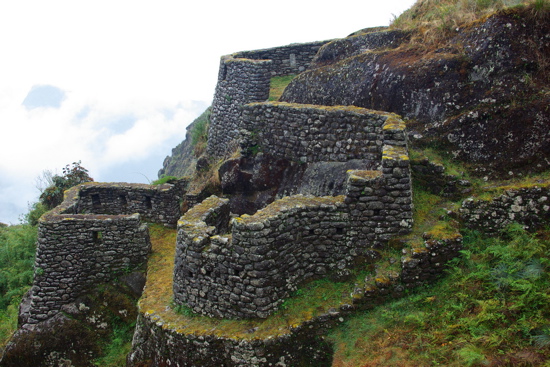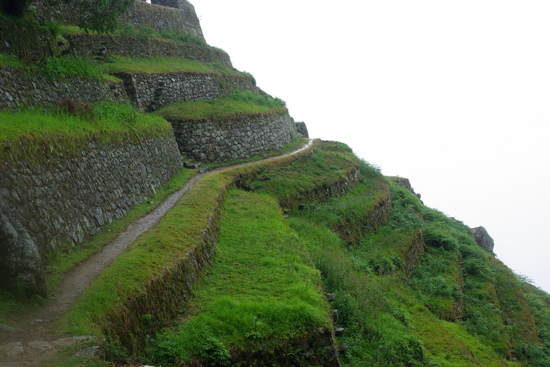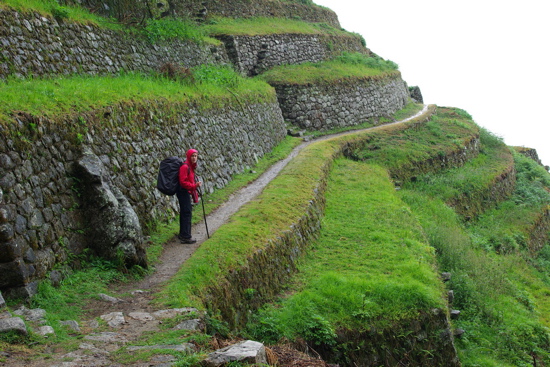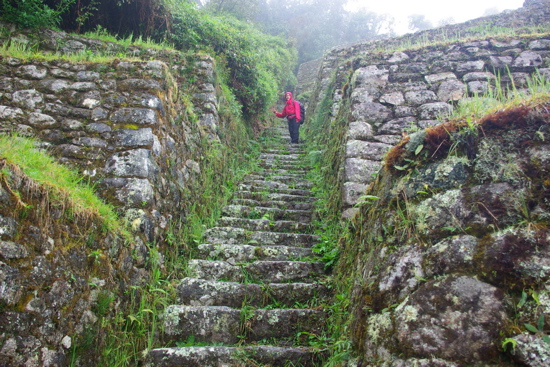The rain continued for the duration of our second night on the Inca Trail — periodically abating, and then rearing up, and then abating in 5 minute intervals. I twisted my body around in my sleeping bag, struggling to find a position that didn’t grind my hips into the rock-hard mattress pad. I circled through my repertoire of surefire sleep inducers — I engaged in deep breathing through my nose, I counted my breathes and the breathes of those around me, I mentally relived plots to old sit-coms like Family Ties and 90210, I stretched out my spine as long as possible, and I tried to completely blank out my mind. But neither the rain nor my discomfort was the cause of my insomnia; I simply was not tired.
Raoul the Assistant Guide came to our tent with the tea-bearing porters at 5:30am. The night before, Will the Guide regaled our rum-drinking group with Inca Trail ghost stories, including one about the namesake dead woman of the Dead Woman’s Pass, and he advised us to avoid any undue nighttime hauntings by leaving an offering to her spirit outside of our tent: “She likes Milky Ways.” We left an apple. When we emerged for the tent, the apple was gone, presumably taken by Raoul.
Breakfast was another carb fest involving porridge, bread, and pancakes. Today would not be as hard as Day 2, but it would be long, with no mid-morning snack to see us through to lunch. The rain was light yet the clouds were heavy and dark. We started straight-away with a climb to the second pass. Here’s a view of the terraced campsite where I could not sleep, with a line of porters following us up the pass.
Our group paused briefly to explore Runcu Raccay, a small circular Inca site that was probably used as a rest stop for passing travelers and/or as a strategic watchtower. It served both purposes for us as well. The rain stopped, to the happiness of all.
We continued up the second pass, and it grew cloudier and started to rain again. Our guide Will advised us to carry a rock to deposit on a cairn at the top of the pass while making a wish. I climbed to a small hill to place my rock and make my wish, and then we had a group photo. Don’t we look thrilled?
Soon after we descended the second pass, the rain stopped and the dreaded sun flies converged (imagine gnats that bite). We strolled easily along, occasionally chatting with other members of our group, occasionally stopping for a photo, always marveling at the finely-engineered trail upon which we walked.
(Notice how shiny-clean my hair looks considering it had been 3 days since my last shower? Thanks, insane unseasonable rain!)
Soon after we passed the ruins of Sayac Marca, it began to rain. Hard. With wind. We hurried to our lunch site, which we reached at 11am. The porters set up a tent for us to throw our bags in and then we rushed into the lunch tent, where we sipped tea and waited for the remaining members of our group. Spirits were definitely low as the wind shook the tent and rain began to drip from the ceiling. Many people were wearing their last set of dry clothes. Some girls, including me, couldn’t stop shivering. Everyone couldn’t believe what a wet disaster the Inca Trail had turned out to be.
It’s really hard to overstate how profound an effect the rain had on our trek. I mean, this isn’t North America, when rain has pretty much an equal chance of occurring on any given day of the year. In Peru, there is a rainy season (Oct through April), when it rains pretty much every day, and a dry season (May through September), when it rains less than an inch per month. So, despite being conscientious tourists and paying high-season prices for dry-season conditions, we had the profound misfortune of hiking the Inca Trail during an aberrational climatic blip. The joke around the lunch tent was “If this is the dry season, I wonder what the rainy season is like?”
After another carb-monotonous lunch (“Oh look, potatoes,” I said with overly-feigned surprise as I passed a platter of fried steak and potatoes down the table. “To go with your rice, pasta, and bread,” one of the Brits quipped.) it was onward, and downward. The rain sucked, but it did not lessen my appreciation of the Inca Trail. The vegetation started to grow more jungle-like and exotic.
The Inca Tunnel — a famous place for pictures.
Soon, the nutty New Zealander caught up with us and we reached Phuyu Pata Marca, which in Quechuan means “Cloud-level Town.” How appropriate!
Very impressive stonework here. We spent 20 minutes going up and down the stairs, exploring the ruins.
As we neared the third campsite, the rain began yet again in earnest. There was a fork in the road, and we had a choice: either continue straight to the campsite, or take the long way around to see Intipata, another Inca site that was used primarily for agriculture. Well, sure, it was raining and we were wet, but how many times are we hiking the freaking Inca Trail?
One (just one) advantage of the rain is that it makes colors more saturated for photographs. Also, I got to wear my pink raincoat, making me stand out like a brazen flower amid the ruins.
We arrived at the third campsite at Winay Wayna, where we would spend our last night before reaching Machu Picchu early next morning. There is a bar/restaurant in Winay Wayna, which we hit with the Quebecois. Beers were 10 soles each, an outrageous price until we reminded ourselves it was only $3.50 USD (still, for Peru, an outrageous price).
Dinner that night was sad — our last meal together! The porters baked us a cake. Somehow, they managed to steam eggy batter all afternoon until it formed a cake. It was delicious. In return, our group pooled together a bunch of money for the customary tips for the porters and cook. All 21 of the porters filed into the tent, and the only fluent Spanish speaker among us, the young lady from Connecticut, gave a touching speech about how grateful we were for their services. Everyone clapped. Then the Will the guide told us we’d be waking up at 3:45am the next morning. Mouths dropped open. He told us he wanted us to be the first group at the checkpoint gate into the area of Machu Picchu. The checkpoint opened at 5:30am, but he wanted to be there at 4:30am so we could be the first in, and also because the pavilion only had enough room for one group to stand in case of… (he didn’t say, but we were all thinking “in case of rain.”) I didn’t care about getting up at 3:45am, because I didn’t feel as if sleep would come to me that night, either. We left the dinner tent, peering up at the sky, looking in vain for stars to twinkle out from behind the fortress of clouds….
